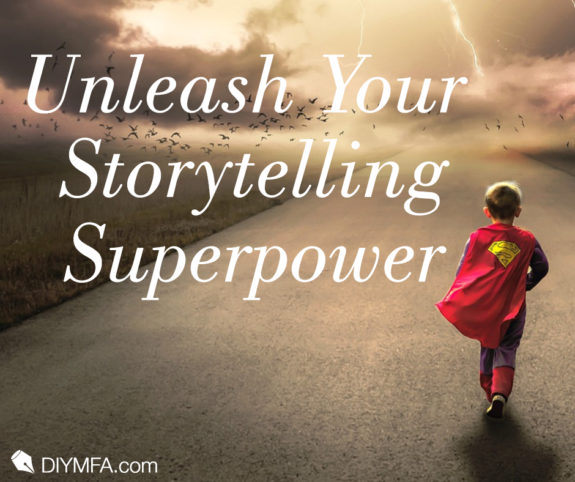Hey Word Nerds! Gabriela here. This is the first of a super special series of four articles discussing one of my favorite topics — your storytelling superpower. I’m so excited to share it with you!
Some say that at the heart of every story, you find a compelling character. I agree… almost. Characters are more than a necessary ingredient for your story, I believe they are your story, and without them you have nothing more than a sequence of plot points. Characters humanize your story, and give readers someone to root for. It’s one thing to watch a newsreel or read a news report of a dramatic event, but when you experience that story through a character, it suddenly becomes more personal and more powerful.
Compare, for example, Stephen Crane’s newspaper account, “The Sinking of the Commodore” (The New York Press, 1897) with his short story “The Open Boat” published in Scribner’s magazine the following year. The former gives a sequence of events summing up what happened when, who died and how. The short story on the other hand, puts us in the boat standing shoulder to shoulder with the desperate men as they try to bail the rising water and eventually have to abandon ship. Both accounts are from the same author who was present on the ship as it went down, but the short story is far more engaging. In it we see the events unfold as those sailors would have experienced them. When we craft stories around a character, we’re not just telling it to our readers, we’re showing them what it feels like to be there.
What is Your Storytelling Superpower?
Every writer has a character archetype they are drawn to and good at bringing to life on the page. When it comes to the protagonist (or main character of your story) there are four such types, but before we dive into the particulars of each one, it’s important to understand where these archetypes come from in the first place.
The protagonist is the point of focus for your story. Who this character is and what she wants will drive the plot from beginning to end. The archetypes for this main character come from the intersection between her personality type and what she wants.
Your Protagonist’s Type
Every character in literature falls into one of two types. No matter how nuanced or multi-faceted your protagonist may be, at her most basic she is either an everyman or a larger-than-life hero.
The everyman protagonist—or what I like to call the “ordinary Joe (or Jane)”—is a regular guy going about his regular life, until something happens that turns his world upside down. The ordinary Joe is an unlikely hero, caught in extraordinary circumstances and despite being out of his league, he eventually rises beyond his ordinariness and does something astonishing. While at first glance the everyman might not be anything special, with the right motivation he can become a hero.
At the other extreme we have the larger-than-life hero. This character is so powerful and amazing, she seems almost perfect. We already know all the incredible things this character can do, so instead the key with making this character come to life is to show a hint of vulnerability, a chink in the armor. After all, even Superman has his kryptonite.
Keep in mind these two personality types are not separate categories so much as they are opposite ends of the same spectrum. Most characters fall somewhere in the middle of two extremes and as the story progresses they shift toward their opposite toward the opposite pole. I call this concept the “Opposite is Possible” theory and what it means is that as writers it is our job to show that our main characters can become the opposite of what they appear at the beginning of the story. This is not about making your protagonist behave in ways that seem outlandish or out of character. Rather, the goal is to show the potential for change and plant the right hints, so when your everyman or larger-than-life hero does begin to shift, it doesn’t feel out of the blue to your reader. Remember that in every story, your protagonist must change in some way. Regardless of whether this change is extreme or subtle, you need to craft that main character with that possibility for change already baked into the narrative.
What Does Your Character Want?
“Make your character want something!” If you have taken a writing class or read any books about the craft, you have likely heard this advice. But it’s not enough to make your protagonist want just anything, it has to be something so important to your character that the pursuit of that desire will keep your story moving. Making your character want a glass of water is not that compelling if he can just get up and walk to the kitchen. But if your character is stranded on a raft in the middle of the ocean, then a glass of water takes on a whole new level of significance.
Just as there are two types of protagonists, there are also only two fundamental things your character can want. On one hand, your character might want to change something, whether in himself or the world around him. Or his most fervent desire might be preservation and keeping things exactly as they are. Of course no story is ever quite that simple, and often your character will want many different things, including ones that might contradict each other. When you consider all these desires, however, you will usually find that your character leans toward one type over the other. Like with the character types, what your character wants is a spectrum rather than two binary extremes.
At this point we have established that both protagonist’s personality and desire fall on two distinct spectrums, but what does any of this have to do with us as writers? That’s where the concept of the “storytelling superpower” comes in.







